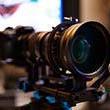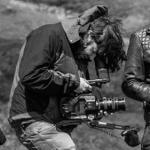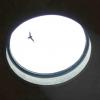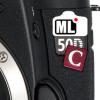
Tim Naylor
-
Posts
218 -
Joined
-
Last visited
Reputation Activity
-
 Tim Naylor got a reaction from jcs in Evolving Sony A7S Review (Part 1)
Tim Naylor got a reaction from jcs in Evolving Sony A7S Review (Part 1)
Nice tests. I personally felt the 5d3 raw had the richer colors. There seems to be a magenta shift on the A7s. When I tested f55 I noticed this as well which lead to either faces timed nicely to the expense of other colors being off or vice a versa or lots of windowing in the grade.
I know good tests are time consuming, but it'd be great to see a similar shoot out with a face and a color chart. Grade to the face and see what happens to your chart and grade to the chart and see what happens to the face. This reveals a lot about a camera's color accuracy. Of all the camera's I've tested, the Alexa by far won this test while the F55 was a fail. I'd love to see how the A7s stacks up in this regard.
-
 Tim Naylor got a reaction from John D in Panasonic GH4 Review
Tim Naylor got a reaction from John D in Panasonic GH4 Review
There seems to be various pissing matches concerning specs of this camera and that. At the end of the day, does it produce an image you like and how useable it is? I'm in prep for a movie I start in a few weeks. Intended for theatrical release we need IQ that'll hold up to the big screen. So we tested F55 vs Dragon vs Alexa. The tests were precise and extensive: ISO, over / under exposure, all with people and Macbeth Color Charts. Because of the tight schedule, I wanted the smaller cameras (f55 and Dragon) to be as good or better than the Arri. So we graded and projected the results at a full on commercial grade suite with a 15' screen.
The producer and director immediately felt the Arri was a hands down the better image. They couldn't quantify it. Being a tech, for me and the colorist, it all came down to flesh tones and color grade across the entire exposure range. When we wrestled with the F55 to get a rich honest flesh tone, the color chart was completely off (read: extra time in post keying and windowing that no one wants to pay for). The Epic came close, having quietest noise at all ISO's, but it too had some flesh tone issues as well as color aberrations in clipped areas. Worth noting, we shot the Alexa at 444 Pro Rez, not Arri Raw. How does it retain its amazing colors? Trading pixels for color space, instead of spreading your butter too thin.
Why do I bring this up? Because much of the conversations here obsess about pixel count, DR and other specs but few mention how well it grades the human face and how the grade effects your back ground colors. When I compare cameras, it's the first thing I look at (and what audience's pay the most attention to). The F55 despite it's stellar specs is dead to me as a feature film camera. We don't make movies for techs.
So I'm holding my judgement on the GH4 until I see some footage, not of rocks, bridges and buildings at night, cars, aggressive music video LUT's but just attempts to shoot faces, graded as naturally as can be. This is what attracted me to the BMC line up. I felt the colors were honest, requiring little work out of the box. I believe this is much of the success of the C300/500 line (see Hurlbut tests) despite being 8 bit and clippy on the high end. The F55 held highlights 6 stops over key. Insane DR. But specs do not a great image make. We also tested Scheider Xenars vs Cooke S4's vs Super Speeds. The sharpest of the bunch, the Schneiders were the F55 of lenses. Soulless paperweights.
-
 Tim Naylor got a reaction from nahua in Panasonic GH4 Review
Tim Naylor got a reaction from nahua in Panasonic GH4 Review
There seems to be various pissing matches concerning specs of this camera and that. At the end of the day, does it produce an image you like and how useable it is? I'm in prep for a movie I start in a few weeks. Intended for theatrical release we need IQ that'll hold up to the big screen. So we tested F55 vs Dragon vs Alexa. The tests were precise and extensive: ISO, over / under exposure, all with people and Macbeth Color Charts. Because of the tight schedule, I wanted the smaller cameras (f55 and Dragon) to be as good or better than the Arri. So we graded and projected the results at a full on commercial grade suite with a 15' screen.
The producer and director immediately felt the Arri was a hands down the better image. They couldn't quantify it. Being a tech, for me and the colorist, it all came down to flesh tones and color grade across the entire exposure range. When we wrestled with the F55 to get a rich honest flesh tone, the color chart was completely off (read: extra time in post keying and windowing that no one wants to pay for). The Epic came close, having quietest noise at all ISO's, but it too had some flesh tone issues as well as color aberrations in clipped areas. Worth noting, we shot the Alexa at 444 Pro Rez, not Arri Raw. How does it retain its amazing colors? Trading pixels for color space, instead of spreading your butter too thin.
Why do I bring this up? Because much of the conversations here obsess about pixel count, DR and other specs but few mention how well it grades the human face and how the grade effects your back ground colors. When I compare cameras, it's the first thing I look at (and what audience's pay the most attention to). The F55 despite it's stellar specs is dead to me as a feature film camera. We don't make movies for techs.
So I'm holding my judgement on the GH4 until I see some footage, not of rocks, bridges and buildings at night, cars, aggressive music video LUT's but just attempts to shoot faces, graded as naturally as can be. This is what attracted me to the BMC line up. I felt the colors were honest, requiring little work out of the box. I believe this is much of the success of the C300/500 line (see Hurlbut tests) despite being 8 bit and clippy on the high end. The F55 held highlights 6 stops over key. Insane DR. But specs do not a great image make. We also tested Scheider Xenars vs Cooke S4's vs Super Speeds. The sharpest of the bunch, the Schneiders were the F55 of lenses. Soulless paperweights.
-
 Tim Naylor got a reaction from Oliver Daniel in Panasonic GH4 Review
Tim Naylor got a reaction from Oliver Daniel in Panasonic GH4 Review
There seems to be various pissing matches concerning specs of this camera and that. At the end of the day, does it produce an image you like and how useable it is? I'm in prep for a movie I start in a few weeks. Intended for theatrical release we need IQ that'll hold up to the big screen. So we tested F55 vs Dragon vs Alexa. The tests were precise and extensive: ISO, over / under exposure, all with people and Macbeth Color Charts. Because of the tight schedule, I wanted the smaller cameras (f55 and Dragon) to be as good or better than the Arri. So we graded and projected the results at a full on commercial grade suite with a 15' screen.
The producer and director immediately felt the Arri was a hands down the better image. They couldn't quantify it. Being a tech, for me and the colorist, it all came down to flesh tones and color grade across the entire exposure range. When we wrestled with the F55 to get a rich honest flesh tone, the color chart was completely off (read: extra time in post keying and windowing that no one wants to pay for). The Epic came close, having quietest noise at all ISO's, but it too had some flesh tone issues as well as color aberrations in clipped areas. Worth noting, we shot the Alexa at 444 Pro Rez, not Arri Raw. How does it retain its amazing colors? Trading pixels for color space, instead of spreading your butter too thin.
Why do I bring this up? Because much of the conversations here obsess about pixel count, DR and other specs but few mention how well it grades the human face and how the grade effects your back ground colors. When I compare cameras, it's the first thing I look at (and what audience's pay the most attention to). The F55 despite it's stellar specs is dead to me as a feature film camera. We don't make movies for techs.
So I'm holding my judgement on the GH4 until I see some footage, not of rocks, bridges and buildings at night, cars, aggressive music video LUT's but just attempts to shoot faces, graded as naturally as can be. This is what attracted me to the BMC line up. I felt the colors were honest, requiring little work out of the box. I believe this is much of the success of the C300/500 line (see Hurlbut tests) despite being 8 bit and clippy on the high end. The F55 held highlights 6 stops over key. Insane DR. But specs do not a great image make. We also tested Scheider Xenars vs Cooke S4's vs Super Speeds. The sharpest of the bunch, the Schneiders were the F55 of lenses. Soulless paperweights.
-
 Tim Naylor got a reaction from Inazuma in Panasonic GH4 Review
Tim Naylor got a reaction from Inazuma in Panasonic GH4 Review
There seems to be various pissing matches concerning specs of this camera and that. At the end of the day, does it produce an image you like and how useable it is? I'm in prep for a movie I start in a few weeks. Intended for theatrical release we need IQ that'll hold up to the big screen. So we tested F55 vs Dragon vs Alexa. The tests were precise and extensive: ISO, over / under exposure, all with people and Macbeth Color Charts. Because of the tight schedule, I wanted the smaller cameras (f55 and Dragon) to be as good or better than the Arri. So we graded and projected the results at a full on commercial grade suite with a 15' screen.
The producer and director immediately felt the Arri was a hands down the better image. They couldn't quantify it. Being a tech, for me and the colorist, it all came down to flesh tones and color grade across the entire exposure range. When we wrestled with the F55 to get a rich honest flesh tone, the color chart was completely off (read: extra time in post keying and windowing that no one wants to pay for). The Epic came close, having quietest noise at all ISO's, but it too had some flesh tone issues as well as color aberrations in clipped areas. Worth noting, we shot the Alexa at 444 Pro Rez, not Arri Raw. How does it retain its amazing colors? Trading pixels for color space, instead of spreading your butter too thin.
Why do I bring this up? Because much of the conversations here obsess about pixel count, DR and other specs but few mention how well it grades the human face and how the grade effects your back ground colors. When I compare cameras, it's the first thing I look at (and what audience's pay the most attention to). The F55 despite it's stellar specs is dead to me as a feature film camera. We don't make movies for techs.
So I'm holding my judgement on the GH4 until I see some footage, not of rocks, bridges and buildings at night, cars, aggressive music video LUT's but just attempts to shoot faces, graded as naturally as can be. This is what attracted me to the BMC line up. I felt the colors were honest, requiring little work out of the box. I believe this is much of the success of the C300/500 line (see Hurlbut tests) despite being 8 bit and clippy on the high end. The F55 held highlights 6 stops over key. Insane DR. But specs do not a great image make. We also tested Scheider Xenars vs Cooke S4's vs Super Speeds. The sharpest of the bunch, the Schneiders were the F55 of lenses. Soulless paperweights.
-
 Tim Naylor got a reaction from Groundless in Panasonic GH4 Review
Tim Naylor got a reaction from Groundless in Panasonic GH4 Review
There seems to be various pissing matches concerning specs of this camera and that. At the end of the day, does it produce an image you like and how useable it is? I'm in prep for a movie I start in a few weeks. Intended for theatrical release we need IQ that'll hold up to the big screen. So we tested F55 vs Dragon vs Alexa. The tests were precise and extensive: ISO, over / under exposure, all with people and Macbeth Color Charts. Because of the tight schedule, I wanted the smaller cameras (f55 and Dragon) to be as good or better than the Arri. So we graded and projected the results at a full on commercial grade suite with a 15' screen.
The producer and director immediately felt the Arri was a hands down the better image. They couldn't quantify it. Being a tech, for me and the colorist, it all came down to flesh tones and color grade across the entire exposure range. When we wrestled with the F55 to get a rich honest flesh tone, the color chart was completely off (read: extra time in post keying and windowing that no one wants to pay for). The Epic came close, having quietest noise at all ISO's, but it too had some flesh tone issues as well as color aberrations in clipped areas. Worth noting, we shot the Alexa at 444 Pro Rez, not Arri Raw. How does it retain its amazing colors? Trading pixels for color space, instead of spreading your butter too thin.
Why do I bring this up? Because much of the conversations here obsess about pixel count, DR and other specs but few mention how well it grades the human face and how the grade effects your back ground colors. When I compare cameras, it's the first thing I look at (and what audience's pay the most attention to). The F55 despite it's stellar specs is dead to me as a feature film camera. We don't make movies for techs.
So I'm holding my judgement on the GH4 until I see some footage, not of rocks, bridges and buildings at night, cars, aggressive music video LUT's but just attempts to shoot faces, graded as naturally as can be. This is what attracted me to the BMC line up. I felt the colors were honest, requiring little work out of the box. I believe this is much of the success of the C300/500 line (see Hurlbut tests) despite being 8 bit and clippy on the high end. The F55 held highlights 6 stops over key. Insane DR. But specs do not a great image make. We also tested Scheider Xenars vs Cooke S4's vs Super Speeds. The sharpest of the bunch, the Schneiders were the F55 of lenses. Soulless paperweights.
-
 Tim Naylor got a reaction from OzNimbus in Panasonic GH4 Review
Tim Naylor got a reaction from OzNimbus in Panasonic GH4 Review
I used to own a R1 MX. I thought if took outstanding footage that no DSLR could touch in terms of colorspace and DR. If I were in the market, I'd buy one over the new BMC shoulder cam or AJA scion. You'd probably score one for 7-8 grand US.
-
 Tim Naylor got a reaction from Stephen Vincent Nguyen in GH4 in Yosemite - Super Weather Sealed!
Tim Naylor got a reaction from Stephen Vincent Nguyen in GH4 in Yosemite - Super Weather Sealed!
I appreciate the Yosemite link. It's good to see how the camera reacts to high info stuff like water as well as hi con like snow. That said, I mostly shoot dramas. Does anyone have links non - experimental narratives with a "natural" looking grade or even DR tests that focus on faces? My biggest concerns are natural full range flesh tones and a decent contrast range.
Thanks
-
 Tim Naylor got a reaction from Xiong in Blackmagic URSA - a $6k 4K professional cinema camera with interchangeable sensor
Tim Naylor got a reaction from Xiong in Blackmagic URSA - a $6k 4K professional cinema camera with interchangeable sensor
Ursa's an interesting proposition. It's size doesn't bother me for most productions I work (episodic, commercials, features and docs). It's back heavy so it'll balance on my shoulder nicely. But they should've recessed the bottom more to accommodate a low profile/low CG shoulder pad (see Amira). I do think the 10" screen will come in handy for evaluating a 4k image. But if they're targeting studio style production, they should have made it swappable to the left or right side. The last thing I need is an AC breathing down my back. If a cameraman were behind the design, it'd be EVF on operator's side and large monitor on the "dumb" side. Now AC/Director would have a nice big screen while the operator can zone out alone with an EVF.
Also on the shoulder I wouldn't be using a 10" screen three inches from my face, instead an EVF. But for most productions, I find the 10" screen would come in handy. It's one less piece of gack to be dangling from some kind of arm or rigging. The shoots I work, we're flinging cameras around on incredibly packed schedules and monitor mounts eventually come out of adjustment, waste time and add to frustration.
I do find the swappable chip a smart consideration for future proofing, given that there will be a better chip in less than two years. They took a page from Red handbook. Also, the ability to go HDMI with another camera could have advantages for shooting in cramped quarters (car mounts, elevators, closets, etc) - a more budget friendly approach than Alexa M.
Regarding the gripes about size, when you put everything on a camera you need to operate in a pro environment you either end up with something the size of an Alexa, F55 or a rigged out frankencam or rigged out Epic. The all in one approach is simple and fast to set up. I started in film many years back and while I don't miss it, I do miss the simplicity of some of the better designs (Aaton, why have you forsaken us?).
At 6500.00 you can't bitch too hard. And I love anyone that takes a broadside at RED. It's biggest limitation to large productions adopting it is the 12 stop dynamic range and middling sensitivity. I recently did a spot on the 4k BMC and while I loved the over all color imagery, its highlight limitations (especially against skies and windows) made me wishing I had an Arri chip. I actually prefer aspects of the BMCPC over the BMC 4k image. Highlight clipping is the difference between doubling the output on your lighting package or walking lights way too close to bring up the fill or gelling windows. It's the main reason why despite the rental price, most indies in NYC seem to be shooting Alexa (and perhaps Dragon later). It saves you money and time elsewhere. On the budget end, the extra DR is what has me still loving the 5D3 hack and not so much the images of the GH4 (Panasonic rep on Zacuto interview pegs it at about 11 stops and change).
In all I was hoping for someone to introduce a mini camera (GH4 or Pocket cam size), with a log style LUT, 13 + DR, large sensor and Pro rez. Hopefully the Chinese are listening.
-
 Tim Naylor got a reaction from Aussie Ash in Blackmagic URSA - a $6k 4K professional cinema camera with interchangeable sensor
Tim Naylor got a reaction from Aussie Ash in Blackmagic URSA - a $6k 4K professional cinema camera with interchangeable sensor
Ursa's an interesting proposition. It's size doesn't bother me for most productions I work (episodic, commercials, features and docs). It's back heavy so it'll balance on my shoulder nicely. But they should've recessed the bottom more to accommodate a low profile/low CG shoulder pad (see Amira). I do think the 10" screen will come in handy for evaluating a 4k image. But if they're targeting studio style production, they should have made it swappable to the left or right side. The last thing I need is an AC breathing down my back. If a cameraman were behind the design, it'd be EVF on operator's side and large monitor on the "dumb" side. Now AC/Director would have a nice big screen while the operator can zone out alone with an EVF.
Also on the shoulder I wouldn't be using a 10" screen three inches from my face, instead an EVF. But for most productions, I find the 10" screen would come in handy. It's one less piece of gack to be dangling from some kind of arm or rigging. The shoots I work, we're flinging cameras around on incredibly packed schedules and monitor mounts eventually come out of adjustment, waste time and add to frustration.
I do find the swappable chip a smart consideration for future proofing, given that there will be a better chip in less than two years. They took a page from Red handbook. Also, the ability to go HDMI with another camera could have advantages for shooting in cramped quarters (car mounts, elevators, closets, etc) - a more budget friendly approach than Alexa M.
Regarding the gripes about size, when you put everything on a camera you need to operate in a pro environment you either end up with something the size of an Alexa, F55 or a rigged out frankencam or rigged out Epic. The all in one approach is simple and fast to set up. I started in film many years back and while I don't miss it, I do miss the simplicity of some of the better designs (Aaton, why have you forsaken us?).
At 6500.00 you can't bitch too hard. And I love anyone that takes a broadside at RED. It's biggest limitation to large productions adopting it is the 12 stop dynamic range and middling sensitivity. I recently did a spot on the 4k BMC and while I loved the over all color imagery, its highlight limitations (especially against skies and windows) made me wishing I had an Arri chip. I actually prefer aspects of the BMCPC over the BMC 4k image. Highlight clipping is the difference between doubling the output on your lighting package or walking lights way too close to bring up the fill or gelling windows. It's the main reason why despite the rental price, most indies in NYC seem to be shooting Alexa (and perhaps Dragon later). It saves you money and time elsewhere. On the budget end, the extra DR is what has me still loving the 5D3 hack and not so much the images of the GH4 (Panasonic rep on Zacuto interview pegs it at about 11 stops and change).
In all I was hoping for someone to introduce a mini camera (GH4 or Pocket cam size), with a log style LUT, 13 + DR, large sensor and Pro rez. Hopefully the Chinese are listening.
-
 Tim Naylor got a reaction from andy lee in Blackmagic URSA - a $6k 4K professional cinema camera with interchangeable sensor
Tim Naylor got a reaction from andy lee in Blackmagic URSA - a $6k 4K professional cinema camera with interchangeable sensor
Ursa's an interesting proposition. It's size doesn't bother me for most productions I work (episodic, commercials, features and docs). It's back heavy so it'll balance on my shoulder nicely. But they should've recessed the bottom more to accommodate a low profile/low CG shoulder pad (see Amira). I do think the 10" screen will come in handy for evaluating a 4k image. But if they're targeting studio style production, they should have made it swappable to the left or right side. The last thing I need is an AC breathing down my back. If a cameraman were behind the design, it'd be EVF on operator's side and large monitor on the "dumb" side. Now AC/Director would have a nice big screen while the operator can zone out alone with an EVF.
Also on the shoulder I wouldn't be using a 10" screen three inches from my face, instead an EVF. But for most productions, I find the 10" screen would come in handy. It's one less piece of gack to be dangling from some kind of arm or rigging. The shoots I work, we're flinging cameras around on incredibly packed schedules and monitor mounts eventually come out of adjustment, waste time and add to frustration.
I do find the swappable chip a smart consideration for future proofing, given that there will be a better chip in less than two years. They took a page from Red handbook. Also, the ability to go HDMI with another camera could have advantages for shooting in cramped quarters (car mounts, elevators, closets, etc) - a more budget friendly approach than Alexa M.
Regarding the gripes about size, when you put everything on a camera you need to operate in a pro environment you either end up with something the size of an Alexa, F55 or a rigged out frankencam or rigged out Epic. The all in one approach is simple and fast to set up. I started in film many years back and while I don't miss it, I do miss the simplicity of some of the better designs (Aaton, why have you forsaken us?).
At 6500.00 you can't bitch too hard. And I love anyone that takes a broadside at RED. It's biggest limitation to large productions adopting it is the 12 stop dynamic range and middling sensitivity. I recently did a spot on the 4k BMC and while I loved the over all color imagery, its highlight limitations (especially against skies and windows) made me wishing I had an Arri chip. I actually prefer aspects of the BMCPC over the BMC 4k image. Highlight clipping is the difference between doubling the output on your lighting package or walking lights way too close to bring up the fill or gelling windows. It's the main reason why despite the rental price, most indies in NYC seem to be shooting Alexa (and perhaps Dragon later). It saves you money and time elsewhere. On the budget end, the extra DR is what has me still loving the 5D3 hack and not so much the images of the GH4 (Panasonic rep on Zacuto interview pegs it at about 11 stops and change).
In all I was hoping for someone to introduce a mini camera (GH4 or Pocket cam size), with a log style LUT, 13 + DR, large sensor and Pro rez. Hopefully the Chinese are listening.
-
 Tim Naylor got a reaction from tehgeek in Canon 4K refresh - C200 and C400 coming at NAB?
Tim Naylor got a reaction from tehgeek in Canon 4K refresh - C200 and C400 coming at NAB?
I bring up Alexa because some on this thread think 4k is going to save the world. My apologies if I was "ranting", that was less than pro of me. My intent was to point out, that the IQ of the GH4 is purely speculation here as Andrew or no one on this thread has actually used it in any meaningful way. If it's great, more power to it! But until anyone's actually taken it to the mats, so to speak, how can you begin to say it beats out the C300's IQ. The tone here is beginning to feel like Reduser, a never ending toast to 4k while missing the big picture.
Sorry Andrew if my working on "TV crap" offends you. It's how many of us have to make a living along with shooting feature and commercial crap. Not all of us are lucky enough to own our very own blog. In my world, what makes a good camera is more than just spec sheets. There's a reason why the Epic at 5k rarely makes an appearance these days on film or TV sets and not at all at the Academies. I still use it for commercials here and there because producers love to punch in post (they don't know what they want on set). I sold mine last year because I felt the colors were thin and honestly couldn't sell it to clients for all but a few jobs.
So while slaying the 300, Mr, Reid, don't overlook areas that the Gh4 comes short - the C300's XLR's, Built In ND's, Insanely high ISO, Log C, and better lens choice.
To your relief, I realize I stepped into the wrong playground and bid this forum adieu as I return to my TV, Movie, Doc, and Commercial Crap.
-
 Tim Naylor got a reaction from tehgeek in Canon 4K refresh - C200 and C400 coming at NAB?
Tim Naylor got a reaction from tehgeek in Canon 4K refresh - C200 and C400 coming at NAB?
While your right to point out Canon needs to step it up, your lionizing of the GH4, a camera that isn't even out yet and one that you haven't even tested in a working environment is a bit speculative beyond reason, borderline fanboy. I use C300's constantly for national broadcast shows because the codec, form factor, storage and power draw ideally suit broadcast work. While you go on about the 4k abilities of a GH4, most pros and networks would take the 1080p of an Alexa any given day. And you seem to overlook the most glaring shortcoming of a GH4 - Micro 4/3's. It's a chip size that's neither here nor there. Too small to give a truly cinematic DOF and too limited in the choice of lenses. Then there are design flaws with the GH4. The HDMI cable will still get in the way of the flip out. Do you know if the 1/4" mount and lens mount have been reinforced since the GH3. I've ripped the 1/4" mount right out of the body from some mild vehicle mount and bent a lens mount with an Olympus zoom. The C 100/300 will easily hold a 70-200 without a lens bracket.
In short, please stop talking like the GH4 is a success before you actually used one on a job with paying clients or extensively tested it. This sort of speculation serves no one, except perhaps Panasonic.
-
 Tim Naylor got a reaction from maxotics in Video quality charts - February 2014
Tim Naylor got a reaction from maxotics in Video quality charts - February 2014
I've shot virtually all of your Level cameras except the F5 and C500. I still think Epic color science was much to be desired. Range is great but skin tones are not there. If it was pure IQ/grade ability I'd put the F65 on top. 16 bit color / 8 k down sample is hard to beat. Just rarely used it because it's ergonomics stink and initially its work flow was cumbersome. I also think the F55 deserves a higher slot. If you shoot in 4k raw it delivers an incredibly gradeable image with global shutter and 16 bit color. 16 bit epecially with 4k cameras is a big deal as Epic tends to spread its butter thin so speak. The time I've wasted trying to get skin to look just right.
I had a GH3 and ditched it for a 5d3 because I found its DR too limited as well as its noise threshold. Sure it's sharper but the image, fleshtones, general color are no match for 5d3 IMO.
Eitherway, it's a cool list and definitely puts things in perspective when you see DSLR's knocking at the door of Level 1.
-
 Tim Naylor got a reaction from Julian in Video quality charts - February 2014
Tim Naylor got a reaction from Julian in Video quality charts - February 2014
I've shot virtually all of your Level cameras except the F5 and C500. I still think Epic color science was much to be desired. Range is great but skin tones are not there. If it was pure IQ/grade ability I'd put the F65 on top. 16 bit color / 8 k down sample is hard to beat. Just rarely used it because it's ergonomics stink and initially its work flow was cumbersome. I also think the F55 deserves a higher slot. If you shoot in 4k raw it delivers an incredibly gradeable image with global shutter and 16 bit color. 16 bit epecially with 4k cameras is a big deal as Epic tends to spread its butter thin so speak. The time I've wasted trying to get skin to look just right.
I had a GH3 and ditched it for a 5d3 because I found its DR too limited as well as its noise threshold. Sure it's sharper but the image, fleshtones, general color are no match for 5d3 IMO.
Eitherway, it's a cool list and definitely puts things in perspective when you see DSLR's knocking at the door of Level 1.
-
 Tim Naylor got a reaction from Sean Cunningham in RED cameras absent from all Oscar cinematography and best picture nominees
Tim Naylor got a reaction from Sean Cunningham in RED cameras absent from all Oscar cinematography and best picture nominees
I don't think it's a budgetary thing as the camera bodies (Epic vs Alexa) list for approximately the same in most major markets, the Epic sometimes a few hundred cheaper. This difference is nothing in the scheme of budgets and is offset by the additional workflow hassle you have with having to transcode R3D and Red cameras tending to crash more. Add in the additional 1.5 of highlight range and higher ASA of Alexa, it saves you considerable time on lighting. Switching from studio to handheld on Alexa is also quicker and easier. I work jobs where where we do this several times a day. That time savings really adds up over the course of a show. Last because of Red more limited DR and color gamut, it takes more time in color correction. So add all of the above up, and Epic becomes a more expensive proposition with no clear advantage in IQ.
Now consider, few movie theaters resolve at 4k (let alone 2k) and few people feel the need to buy a 4k TV set, Epic's resolution advantage amounts to very little, even less when shooting Arriraw or Anamorphic. Someone like Fincher who mostly does aggressive color grades, Epic works fine. But for a more natural skin tone, Alexa's color space has a clear advantage.
I used to own a full blown Epic and got rid of it as I found myself trying to hard to pimp it when it wasn't always the best rig for the gig. Since selling it, I've found myself like the industry shooting on Alexa's about 80 percent of the time.
-
 Tim Naylor got a reaction from ZZ VISUAL in Which 4K camera for the masses? GH4 vs Blackmagic Production Camera
Tim Naylor got a reaction from ZZ VISUAL in Which 4K camera for the masses? GH4 vs Blackmagic Production Camera
"The reason 4:2:2 is left out of the compressed internal recording on the GH4, is to maintain manageable file sizes in 4K and 1080p."
Is that the reason? Canon figured out how to do this at 50mb and the GH4 is touted to record 200mb, they could've have offered 1080p / 200mb at 4:2:2. Since few clients if any ask for a 4k deliverable these days this would have made this camera a must have in any DP's pocket. I'm thinking they don't want to cannibalize the sales of their 4:2:2 video cameras. Canon knows this strategy well. Hopefully the Russians will hack into it and release 4:2:2 beast.
-
 Tim Naylor got a reaction from Andrew Reid in RED cameras absent from all Oscar cinematography and best picture nominees
Tim Naylor got a reaction from Andrew Reid in RED cameras absent from all Oscar cinematography and best picture nominees
I don't think it's a budgetary thing as the camera bodies (Epic vs Alexa) list for approximately the same in most major markets, the Epic sometimes a few hundred cheaper. This difference is nothing in the scheme of budgets and is offset by the additional workflow hassle you have with having to transcode R3D and Red cameras tending to crash more. Add in the additional 1.5 of highlight range and higher ASA of Alexa, it saves you considerable time on lighting. Switching from studio to handheld on Alexa is also quicker and easier. I work jobs where where we do this several times a day. That time savings really adds up over the course of a show. Last because of Red more limited DR and color gamut, it takes more time in color correction. So add all of the above up, and Epic becomes a more expensive proposition with no clear advantage in IQ.
Now consider, few movie theaters resolve at 4k (let alone 2k) and few people feel the need to buy a 4k TV set, Epic's resolution advantage amounts to very little, even less when shooting Arriraw or Anamorphic. Someone like Fincher who mostly does aggressive color grades, Epic works fine. But for a more natural skin tone, Alexa's color space has a clear advantage.
I used to own a full blown Epic and got rid of it as I found myself trying to hard to pimp it when it wasn't always the best rig for the gig. Since selling it, I've found myself like the industry shooting on Alexa's about 80 percent of the time.










